-
Top

-
introduction

-
Main Hall (Kondo)

- Buddha
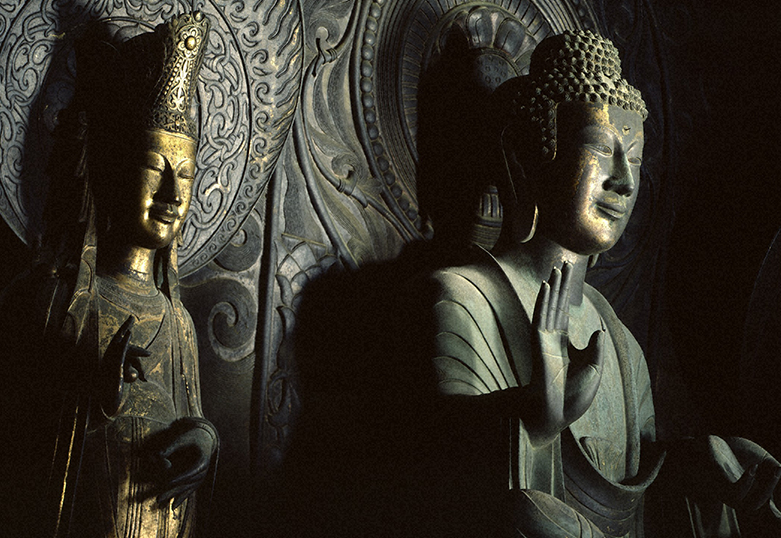
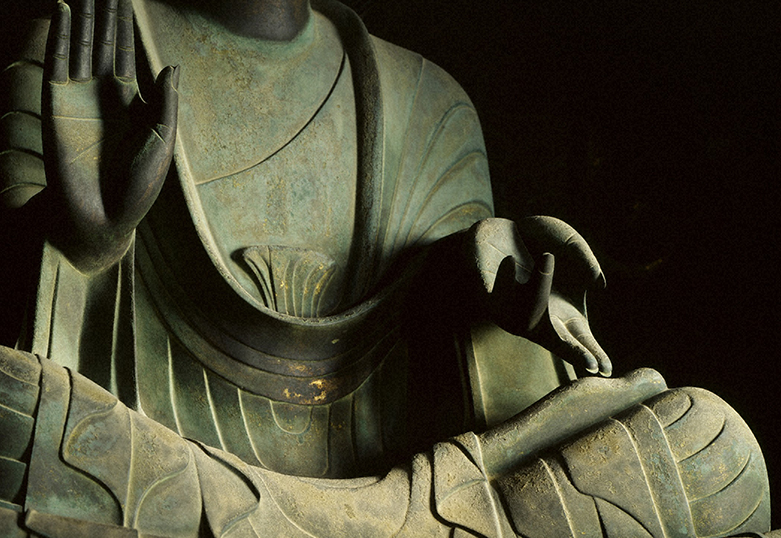
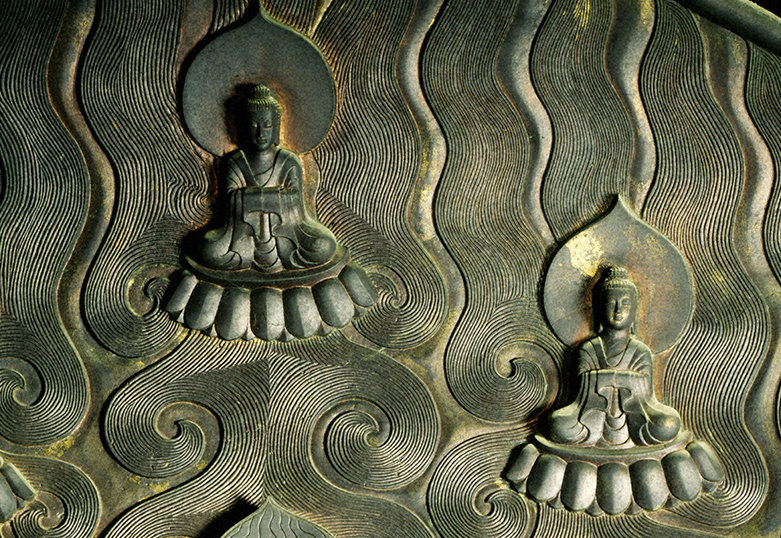
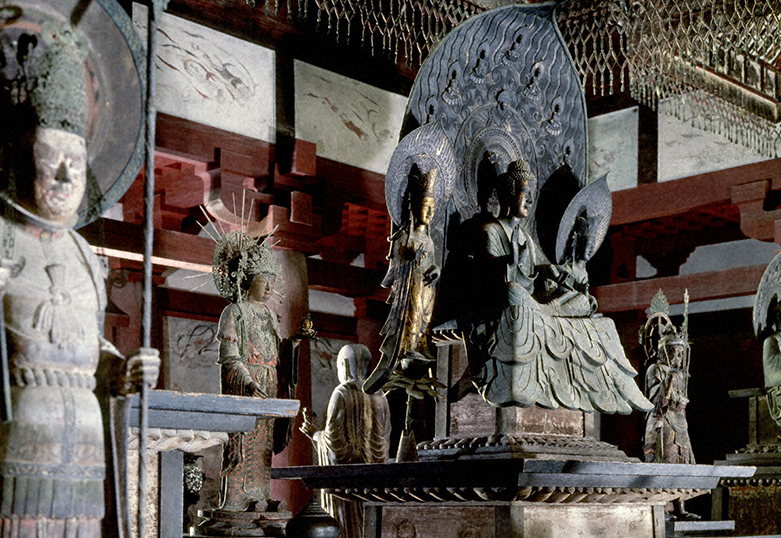
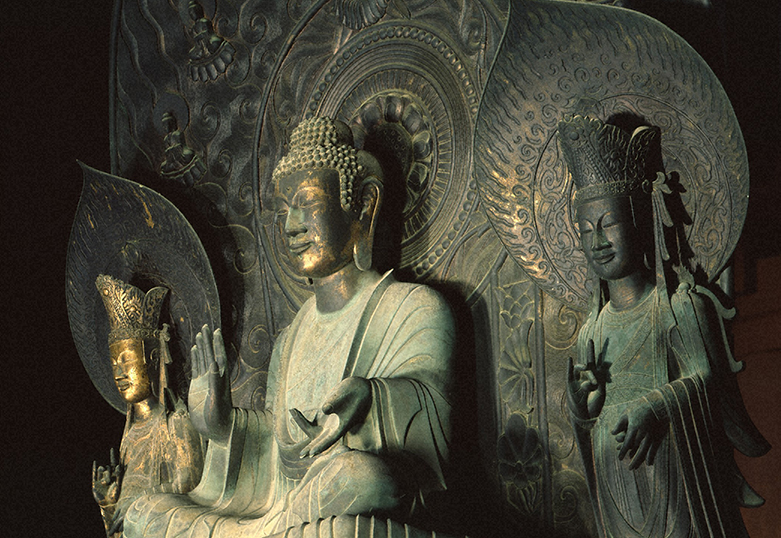
Shaka (Sakyamuni) triad
This gilt bronze statue of Shaka (Shakyamuni, the founder of Buddhism) and his two attendant bodhisattvas Yakuo and Yakujo are works by Tori, a famous Buddhist sculptor.
This figure, completed in 623, has an inscription on the back which describes its origin. It was cast in the likeness of Shotoku Taishi to pray for his recovery from illness. However, the prince passed away in 622 before the statue was completed, so it was dedicated in his name with the hope that he would enter and attain enlightenment in the Pure Land.
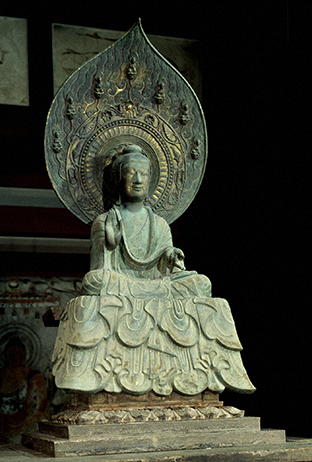
Statue of Yakushi Nyorai
This statue of Yakushi Nyorai, the Buddha of healing and medicine, is enshrined in the Main Hall at Horyuji Temple. It was made in memory of Shotoku Taishi’s father, Emperor Yomei (518–587), who was suffering from illness. An inscription on the back of the Buddha’s halo states that the emperor fell ill in the first year of his reign (586) and desired the statue to be made. He passed away before work on the statue began. The inscription continues: “His sister, Empress Suiko, and his son, Shotoku Taishi, fulfilled his will. The statue was completed in the fifteenth year of Empress Suiko’s reign [c. 607].”
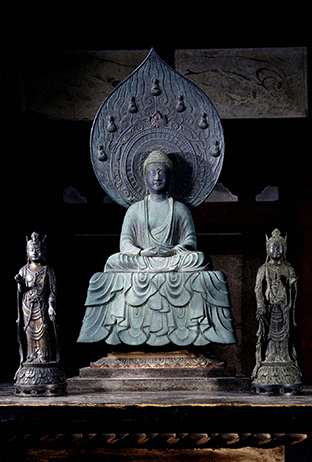
Statue of Amida Nyorai
This gilt bronze statue of Amida Nyorai, the Buddha of the Pure Land, was built in memory of Empress Anahobe no Hashihito (d. 622), the mother of Shotoku Taishi (574–622). The Amida is flanked by two bodhisattva attendants. Amida is the Buddha of infinite light and life, welcoming believers to the Pure Land in the West.
The original statue was stolen in 1097. The current statue was made during the Kamakura period (1185–1333) based on the carvings of the Yakushi Nyorai statues also located in the Main Hall.
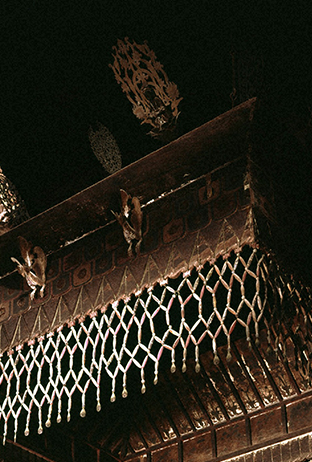
Tengai Canopy in Main Hall
The ornate wooden tengai canopy hanging from the ceiling in the Main Hall is decorated with celestial musicians. The figures, known as tennin, flutter above the statue of Buddha, playing musical instruments such as flutes, biwa lutes, and drums. In addition to the celestial musicians, the canopy is decorated with phoenixes and metal ornaments. The canopy was made during the Asuka period (593–710).
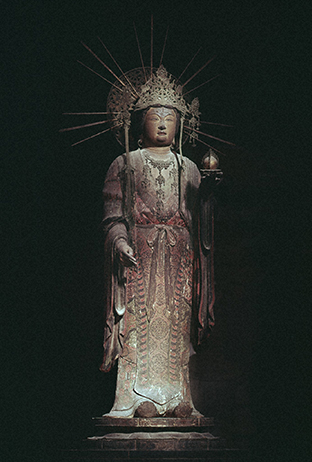
Statue of Kichijoten
Kichijoten is the Buddhist deity of fertility, good fortune, and beauty. She derives from the Hindu goddess Lakshmi.
Kichijoten is holding a wish-granting jewel in her left hand, which is said to bestow happiness, good fortune, and wealth. Meanwhile, the right hand reaches out as if to help someone in need, creating an elegant pose. The statue still retains some of the original coloring. Kichijoten and Bishamonten flank the statue of Shaka Nyorai in the Main Hall. The statue dates to 1078 and is carved from a single block of Japanese cypress wood. Noted for its fine detail, it is one of the most intricate and exquisite pieces of extant religious art from the Heian period (794–1185).
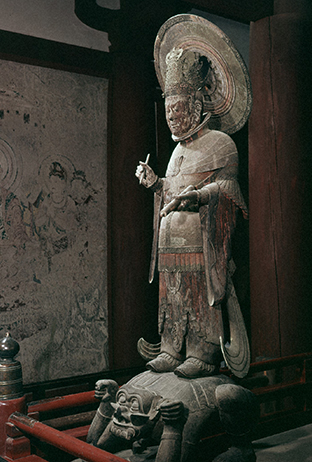
Statues of the Four Heavenly Kings
These statues of the Four Heavenly Kings (Shitenno) were carved from camphor wood in the mid-seventh century. This is the oldest known set in Japan. The statues stand at the four points of the compass, protecting the realm of the Buddha. Jikokuten looks to the east, Zochoten guards the south, Komokuten observes the west, and Tamonten protects the north. Tamonten is also identified as the deity Bishamonten. The Nihon Shoki [Chronicles of Japan] records that Shotoku Taishi (574–622), the founder of Horyuji Temple, prayed to the Four Heavenly Kings for help in his campaign against forces opposed to the spread of Buddhism in Japan.




